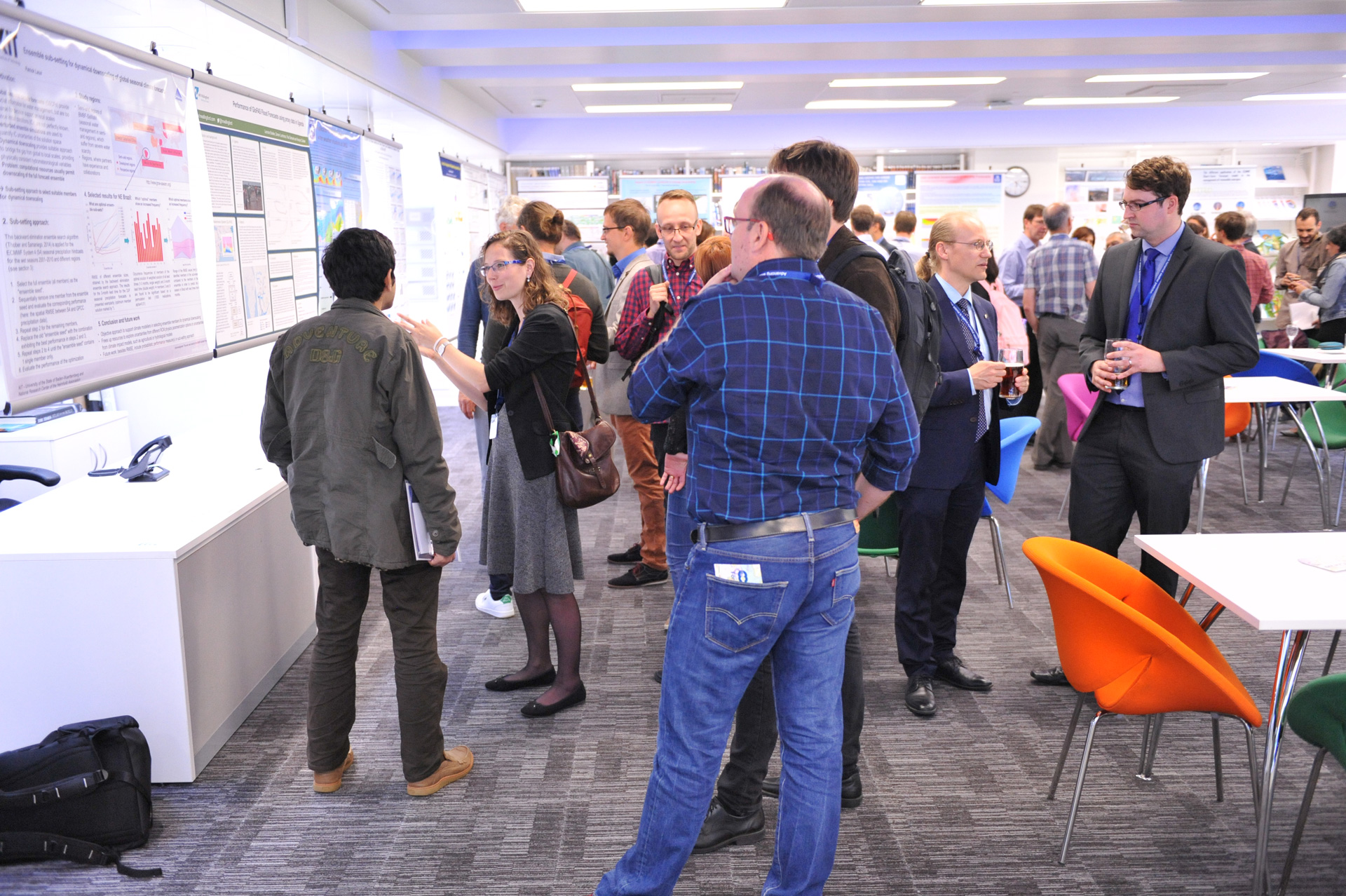This year’s Using ECMWF’s Forecasts meeting (UEF) was attended by a record 120 participants. It took place at the Centre from 5 to 8 June. The UEF offers an opportunity to learn about ECMWF’s plans and new products and services. It also fosters networking and experience-sharing among participants. As in previous years, a dedicated session provided an opportunity to give feedback on ECMWF data and products.
The meeting included presentations, posters and demonstrations. Participants showed and tried out software or services developed at institutions in ECMWF’s Member and Co-operating States and at ECMWF, including the Copernicus services implemented by the Centre.
The only limit is your imagination
Weather data must be transformed into relevant information to be used in decision-making processes. The theme of this year’s UEF was that ‘the only limit is your imagination’ when turning weather data into useful information. For example, indices highlighting favourable conditions for flu outbreaks can help people to make informed decisions regarding their health and well-being; probabilities of winds being above or below specified thresholds are useful in wind farm management; and probabilities of occurrence of specified weather scenarios can help farmers to minimise damage due to mildew on vineyards. These are just a few of the applications that were presented during the UEF. The meeting also looked at how experiencing a severe weather event in virtual reality could support decision-making and how infographics can be used to communicate forecast confidence. The overall focus was on two thematic areas: processing model outputs and impact forecasting.

Meeting highlights
ECMWF Director of Forecasts Florian Pappenberger presented recent developments in physical parametrization, data assimilation and ocean–atmosphere coupling. He also mentioned improvements in Copernicus Climate Change Service (C3S) and Copernicus Atmosphere Monitoring Service (CAMS) open-data forecast products, the availability of global hydrological forecasts (Global Flood Awareness System - GloFAS) and the newly set up service to provide fire danger indices.
A talk on ECMWF forecast product development presented among other things the Centre’s new lightning density products and a new product to show the vertical structure of the atmosphere at a point. Irina Sandu (ECMWF) presented the ‘Understanding uncertainties in the surface–atmosphere exchange’ (USURF) project, which aims to better understand the causes of the observed biases in near-surface parameters. Laura Ferranti (ECMWF) showed a set of new products which are being developed to monitor the quality of predictions of seasonal transitions in the medium and extended ranges.
Applications of ECMWF data presented by weather companies included supporting African farmers by providing them with local weather forecasts, and coupling an eddy-resolving model with ECMWF data to resolve small-scale phenomena like turbulence for applications such as wind turbine planning and management.
A variety of talks showed the use of ECMWF data to support forecasters at national meteorological services in Member and Co-operating States in their duties. Examples of the use of ensemble forecasts to initialise limited-area models and storm surge models were also shown.
Tim Scheitlin from NCAR in the US led a workshop on visualising geoscience data using virtual and augmented reality. Virtual reality (VR) allows the user to be fully immersed in a virtual environment, while augmented reality (AR) enhances the real world with virtual objects. Tim suggested that VR could be used by decision-makers to experience severe weather and understand how their decisions may affect people. UEF participants were able to gain first-hand experience with VR and AR using ECMWF snowfall and snow accumulation products.
Poster sessions
Posters sessions have become a central part of the UEF, with an increasing number of interesting contributions submitted for the meeting. Posters provide an opportunity to engage with other participants who have similar areas of interest and to seek future collaborations.
This year a record number of posters were shown in two sessions. Topics covered included the use of ECMWF’s ensemble forecasts (ENS) for applications in the developing world (Bangladesh, Uganda) to increase resilience and mitigate natural disasters. The quantification of uncertainty by the ENS boosts the value of the forecasts.
There is growing interest in the aviation sector in the use of ECMWF model outputs and products to manage operations at airports and provide flight-specific turbulence forecasts for commercial routes.
A number of posters presented performance assessments of ECMWF forecasts in the medium and extended ranges.
There is a growing number of applications using extended-range forecasts in ECMWF’s Member and Co-operating States. MeteoSwiss presented an application in support of the European HEAT-SHIELD project, which aims to support European workers by providing heat-stress indicators for an early-warning system.
